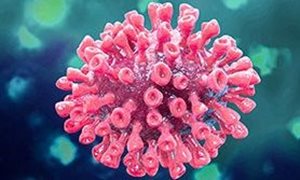17 September 2019
The Ig Nobel Prize is a kind of parody of the Nobel Prize. Winners have carried out research into a subject that makes people laugh, but that on closer inspection makes them see there is true value in the research as well. Marc Abrahams, American scientist and publisher of the journal The Annals of Improbable Research, created the award in 1991. The Ig Nobel Prize has now become a prestigious prize that is awarded by real Nobel Prize winners at a gala in the Sanders Theatre of Harvard University. A few days later the winners are also given the opportunity to present the relevance of their research to the general public during a lecture at the Massachusetts Institute of Technology (MIT).
Dangerous money?
This year Nijmegen is among the winners with an article by Habip Gedik, Timothy Voss and Andreas Voss on the transfer of micro-organisms by money. Even though digital payment has become increasingly popular, cash machines and physical money are still part of our everyday lives. So the researchers asked the question: the money that feels as if it might stick to your fingers, that dirty note that makes you want to wash your hands immediately – does it just feel dirty or is it actually crawling with micro-organisms? Can bacteria actually survive or even thrive on paper money and therefore possibly contaminate other people?
Contamination of sterile notes
Andreas Voss, Professor of department Medical Microbiology at Radboud university medical center and Canisius Wilhelmina Hospital (CWZ): “We examined paper money from a number of countries, such as the American Dollar, Canadian Dollar, Indian Rupee, Croatian Kuna, Romanian Leu, Moroccan Dirham and the Euro. We applied a number of particularly resistant micro-organisms to unused notes; these bacteria included Methicillin-resistant Staphylococcus Aureus (MRSA), Vancomycin-resistant Enterococci (VRE) and Escherichia coli (E. coli) that produce Extended-Spectrum Beta-Lactamases (ESBL). These are bacteria that could form a potential risk in health care.”
MRSA on the Leu
After the application of the resistant bacteria, it was studied whether they were still present on the money three, six and twenty-four hours later. The results were surprising. Voss: “On the Croatian Kuna after three hours none of the micro-organisms were still present, on the Indian rupee they had disappeared after six hours. It was very different with the Romanian Leu, for example. After six hours all the bacteria strains applied were still present. We even found MRSA on the Leu one day later.”
Bank notes are generally made of cotton and other textile fibres and other substances are also added, such as gelatine. The researchers believe that the materials used may be an important factor determining whether bacteria can or cannot survive on bank notes.
Micro-organisms stay where they are
If bacteria are present on money, can’t they easily ‘jump’ onto the person who is given the money? This isn’t always true, according to the research. The three persons who were handed American and Romanian bank notes with the bio-organisms, were in fact contaminated. But when they were given a euro note, their hands remained free of bacteria. The micro-organisms on the European note in this case just stayed where they were.
Reminder for health care
Dirty money does exist, but is it really a medical problem? “Not directly”, according to Voss. “We come into contact with micro-organisms all day long. Our bodies have a natural defence against pathogens called the immune system, certainly if the basic rules of hygiene are observed such as washing hands before contact with mucous membranes, before eating and before contact with wounds. For people in health care it’s at most a reminder that contact with their environment can also result in contaminated hands. And that hand hygiene, such as disinfection, in care institutions is actually very important in contact with the patient.”
In 2011 Natalie Sebanz received the award for her research into contagious yawning in the red-footed tortoise.
In 2012 the honour was awarded to Tulio Guadalupe for his research that showed that the Eiffel Tower appears smaller if you lean to the left.
In 2015 Mark Dingemanse won an Ig Nobel for his discovery that the word "huh?" (or its equivalent) seems to exist in almost every human language.
This year Habip Gedik and Timothy and Andreas Voss join the ranks of winners with their publication ‘Money and transmission of bacteria’, published in Antimicrobial Resistance and Infection Control.

The Ig Nobel Prize is a kind of parody of the Nobel Prize. Winners have carried out research into a subject that makes people laugh, but that on closer inspection makes them see there is true value in the research as well. Marc Abrahams, American scientist and publisher of the journal The Annals of Improbable Research, created the award in 1991. The Ig Nobel Prize has now become a prestigious prize that is awarded by real Nobel Prize winners at a gala in the Sanders Theatre of Harvard University. A few days later the winners are also given the opportunity to present the relevance of their research to the general public during a lecture at the Massachusetts Institute of Technology (MIT).
Dangerous money?
This year Nijmegen is among the winners with an article by Habip Gedik, Timothy Voss and Andreas Voss on the transfer of micro-organisms by money. Even though digital payment has become increasingly popular, cash machines and physical money are still part of our everyday lives. So the researchers asked the question: the money that feels as if it might stick to your fingers, that dirty note that makes you want to wash your hands immediately – does it just feel dirty or is it actually crawling with micro-organisms? Can bacteria actually survive or even thrive on paper money and therefore possibly contaminate other people?
Contamination of sterile notes
Andreas Voss, Professor of department Medical Microbiology at Radboud university medical center and Canisius Wilhelmina Hospital (CWZ): “We examined paper money from a number of countries, such as the American Dollar, Canadian Dollar, Indian Rupee, Croatian Kuna, Romanian Leu, Moroccan Dirham and the Euro. We applied a number of particularly resistant micro-organisms to unused notes; these bacteria included Methicillin-resistant Staphylococcus Aureus (MRSA), Vancomycin-resistant Enterococci (VRE) and Escherichia coli (E. coli) that produce Extended-Spectrum Beta-Lactamases (ESBL). These are bacteria that could form a potential risk in health care.”
MRSA on the Leu
After the application of the resistant bacteria, it was studied whether they were still present on the money three, six and twenty-four hours later. The results were surprising. Voss: “On the Croatian Kuna after three hours none of the micro-organisms were still present, on the Indian rupee they had disappeared after six hours. It was very different with the Romanian Leu, for example. After six hours all the bacteria strains applied were still present. We even found MRSA on the Leu one day later.”
Bank notes are generally made of cotton and other textile fibres and other substances are also added, such as gelatine. The researchers believe that the materials used may be an important factor determining whether bacteria can or cannot survive on bank notes.
Micro-organisms stay where they are
If bacteria are present on money, can’t they easily ‘jump’ onto the person who is given the money? This isn’t always true, according to the research. The three persons who were handed American and Romanian bank notes with the bio-organisms, were in fact contaminated. But when they were given a euro note, their hands remained free of bacteria. The micro-organisms on the European note in this case just stayed where they were.
Reminder for health care
Dirty money does exist, but is it really a medical problem? “Not directly”, according to Voss. “We come into contact with micro-organisms all day long. Our bodies have a natural defence against pathogens called the immune system, certainly if the basic rules of hygiene are observed such as washing hands before contact with mucous membranes, before eating and before contact with wounds. For people in health care it’s at most a reminder that contact with their environment can also result in contaminated hands. And that hand hygiene, such as disinfection, in care institutions is actually very important in contact with the patient.”
Previous Nijmegen winners of an Ig Nobel
In 2000 Andre Geim was awarded the prize for using a very strong magnet to levitate a frog . Ten years later he also won the real Nobel Prize, for physics.In 2011 Natalie Sebanz received the award for her research into contagious yawning in the red-footed tortoise.
In 2012 the honour was awarded to Tulio Guadalupe for his research that showed that the Eiffel Tower appears smaller if you lean to the left.
In 2015 Mark Dingemanse won an Ig Nobel for his discovery that the word "huh?" (or its equivalent) seems to exist in almost every human language.
This year Habip Gedik and Timothy and Andreas Voss join the ranks of winners with their publication ‘Money and transmission of bacteria’, published in Antimicrobial Resistance and Infection Control.
Related news items

Chronic malaria infections produce more and more infectious gametocytes
28 April 2021 In a recent article in Nature Communications, researchers from the department of Medical Microbiology uncovered intriguing dynamics in the production of the transmission stages of malaria parasites, gametocytes. go to page
Invasive fungal infections in influenza and COVID-19
8 July 2020 The Aspergillus fungus is found in the lungs of many COVID patients. A parallel occurs with influenza patients, who often develop a serious fungal infection. Although such a serious fungal infection seems to occur less frequently in COVID-patients, alertness remains necessary, go to page
Early symptoms in Radboudumc healthcare workers who were tested for SARS-CoV-2
12 May 2020 In Eurosurveillance RIHS researcher Alma Tostmann and colleagues from the Radboudumc COVID-19 Team describe that general symptoms like fever, headache, general malaise and muscle ache were associated with a positive SARS-CoV-2 test. Respiratory symptoms however, were not predictive for SARS-CoV-2. go to page
Dealing with COVID-19 in low- and middle-income countries
26 March 2020 RIHS researcher Joost Hopman believes that low-and middle-income countries should intensify their preparedness for a possible COVID-19 outbreak. This was the core message of an opinion article that he wrote at the request of the medical journal JAMA. go to page
ERC Consolidator Grant for Bousema and Sechopoulos
12 December 2019 Teun Bousema and Ioannis Sechopoulos each receive an ERC Consolidator Grant of around two million euros. This European research subsidy will enable them to carry out research for the next five years. go to page
